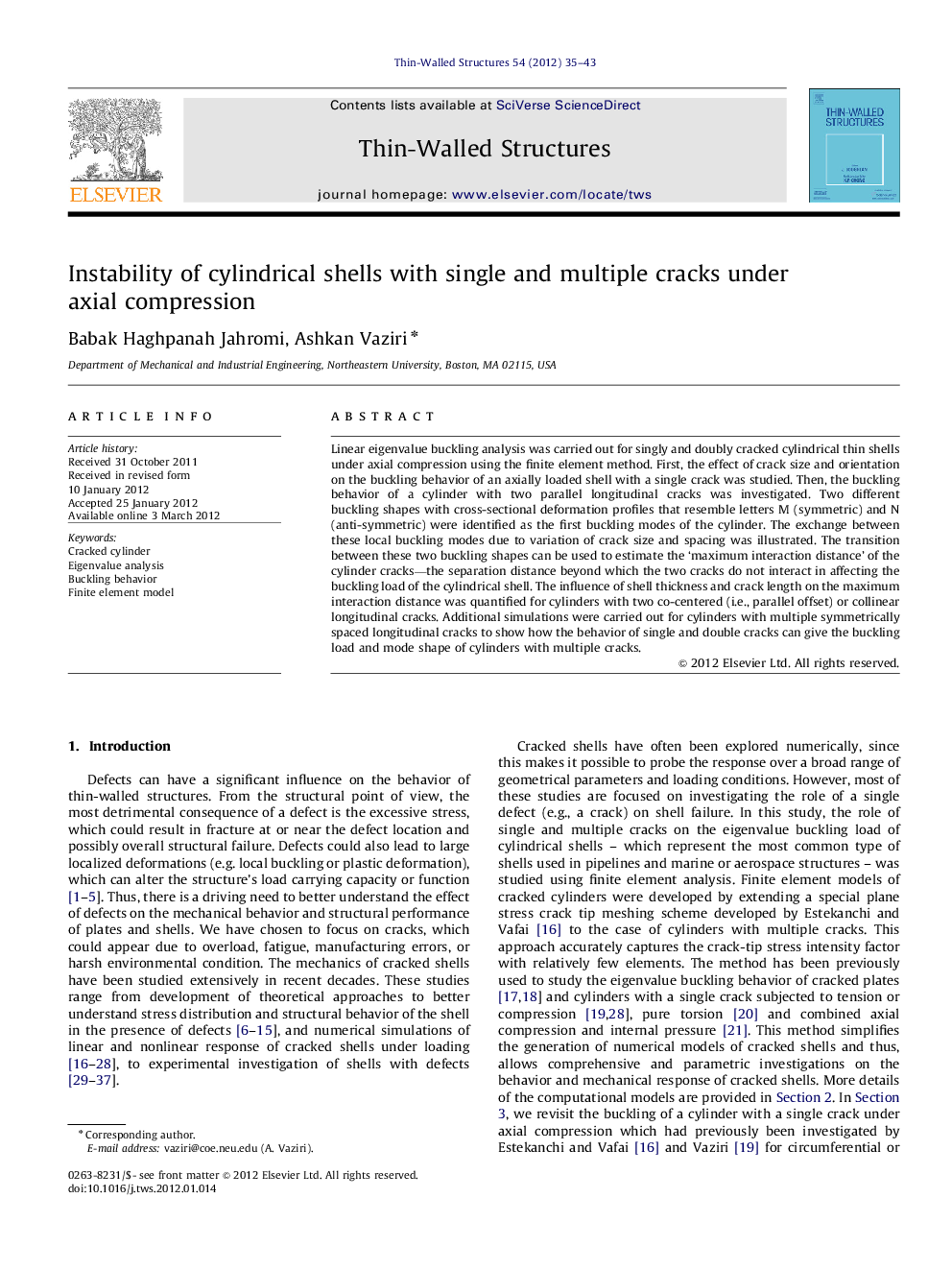| Article ID | Journal | Published Year | Pages | File Type |
|---|---|---|---|---|
| 309380 | Thin-Walled Structures | 2012 | 9 Pages |
Linear eigenvalue buckling analysis was carried out for singly and doubly cracked cylindrical thin shells under axial compression using the finite element method. First, the effect of crack size and orientation on the buckling behavior of an axially loaded shell with a single crack was studied. Then, the buckling behavior of a cylinder with two parallel longitudinal cracks was investigated. Two different buckling shapes with cross-sectional deformation profiles that resemble letters M (symmetric) and N (anti-symmetric) were identified as the first buckling modes of the cylinder. The exchange between these local buckling modes due to variation of crack size and spacing was illustrated. The transition between these two buckling shapes can be used to estimate the ‘maximum interaction distance’ of the cylinder cracks—the separation distance beyond which the two cracks do not interact in affecting the buckling load of the cylindrical shell. The influence of shell thickness and crack length on the maximum interaction distance was quantified for cylinders with two co-centered (i.e., parallel offset) or collinear longitudinal cracks. Additional simulations were carried out for cylinders with multiple symmetrically spaced longitudinal cracks to show how the behavior of single and double cracks can give the buckling load and mode shape of cylinders with multiple cracks.
► Linear eigenvalue buckling was carried out for multiply cracked cylindrical shell. ► ‘Maximum interaction distance’ of the cracks on the cylindrical shell was defined. ► Maximum interaction distance was quantified as a function of geometrical parameters. ► The increase of shell thickness increases the maximum interaction distance.
